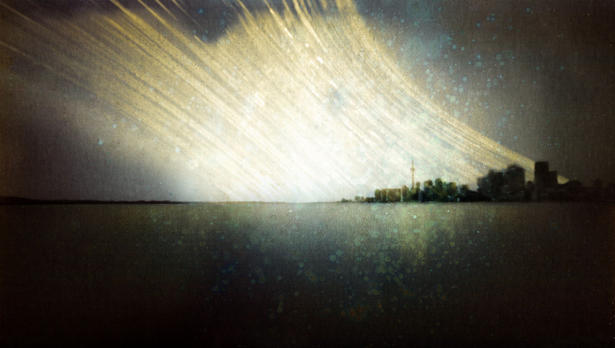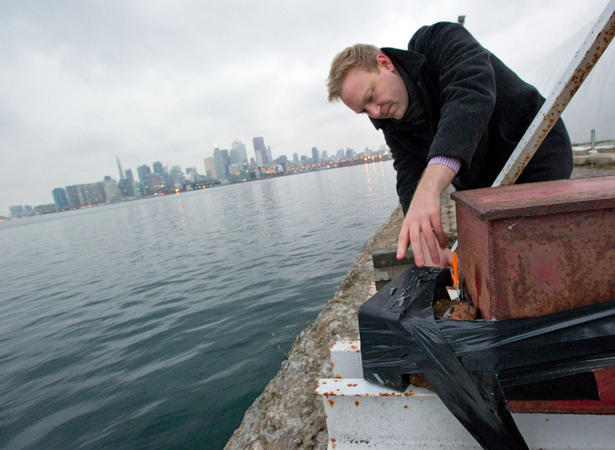A 365 day long exposure of Toronto’s skyline – Michael Chrisman
This incredible experiment created by photographer Michael Chrisman who used a pinhole camera fitted with photosensitive paper to make a 365-day exposure of the Toronto skyline from January the 1st, 2011, to December the 31st, 2011 to capture a single image. On New Year’s Eve day, Chrisman went out to retrieve the camera from a spot near The Docks club in the Port Lands, where his shutter had been open for approximately 31,536,000 seconds, “I’m thrilled with it, it’s a very dreamy photo. This one has a soft and kind of foggy feel.”
The camera, a simple black box, was mounted to the side of a rusty metal box next to a shipping beacon. Chrisman used tape and a few bricks to “secure and position the camera for its long wait”. Chrisman, 31, who is a freelance editorial and art photographer knew a lot could go wrong, such as the camera being stolen, which has happened in some of his earlier long time-exposure experiments. “The biggest difficulty, is trying to ensure the camera will be there when you return. As I’ve become more brazen with regard to installing them in more public or more populated areas, more and more cameras have gone missing. I mark down the dates to retrieve the cameras on a calendar; it is such a slow process that the best thing I can do is forget about the cameras so I don’t obsess about them.”
“The most intriguing aspect of the photo, may be the “trails left by the sun as it moves through the sky both throughout the day and as the seasons change.” Chrisman said in a email interview with the Star. With the length of Chrisman’s exposures, the paper is extremely overexposed, so there actually is no need to use chemicals to bring up the image. After so long, it is there on its own and visible to the naked eye. “If I were to try to develop the paper in a traditional darkroom, the image would be lost”. Instead, he uses a scanner to capture the image from the paper, and in doing so, destroys the paper image itself. “The bright light of the scanner slowly erases the image, inch by inch, as it captures it.” What took a year to make is unfotunatley gone in moments. “Time is always a major component in photography, but is usually dealt with in fractions of a second. Exploring the limits of the medium is part of what drew me to attempting this photograph. These photos are a constant experiment, and with each test taking months or years, it is a very slow experiment.”









